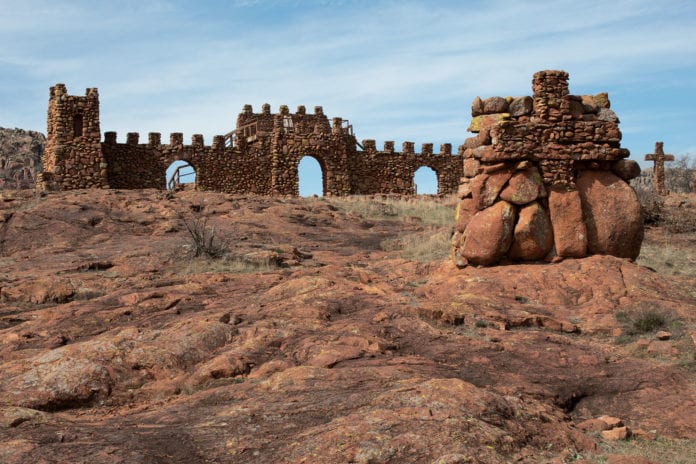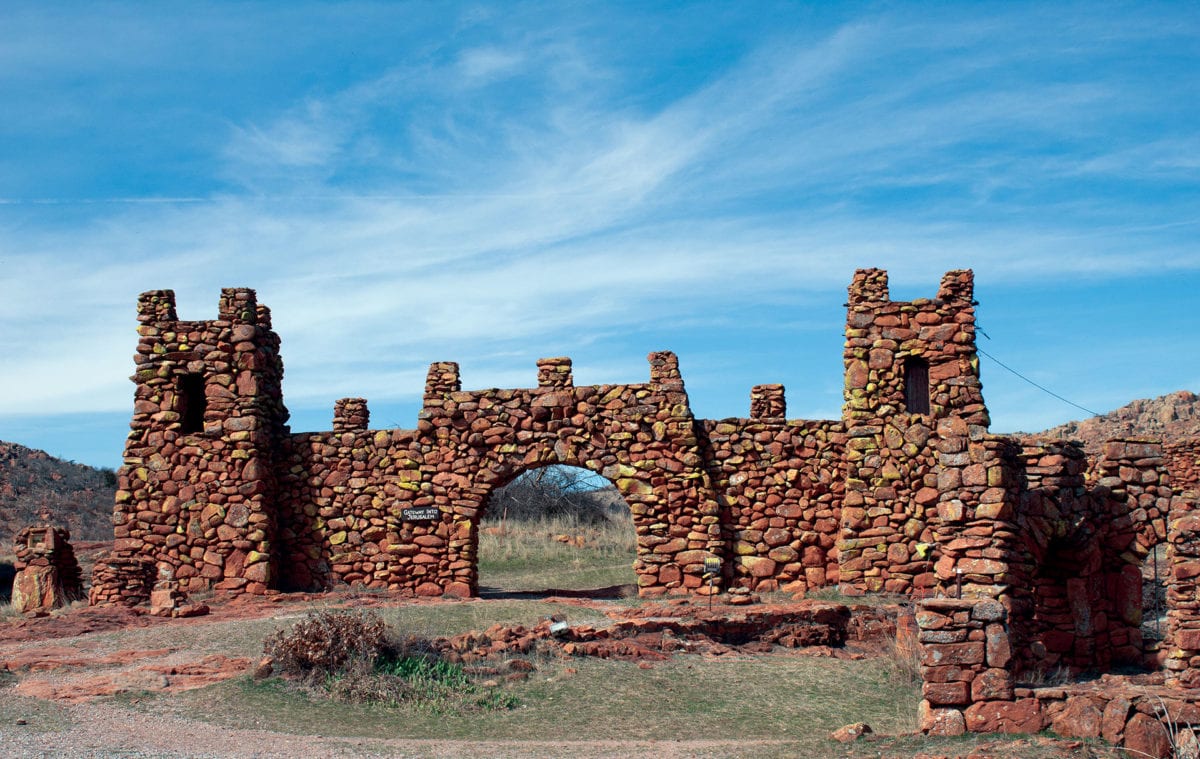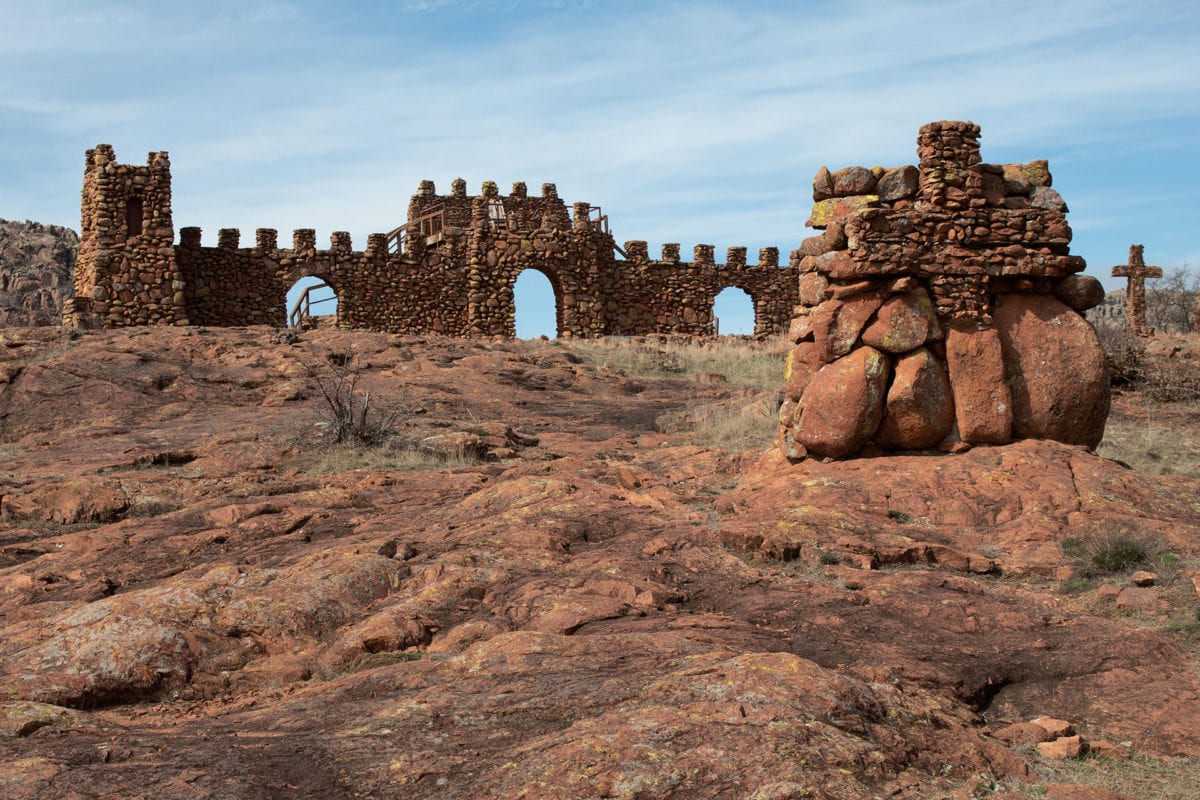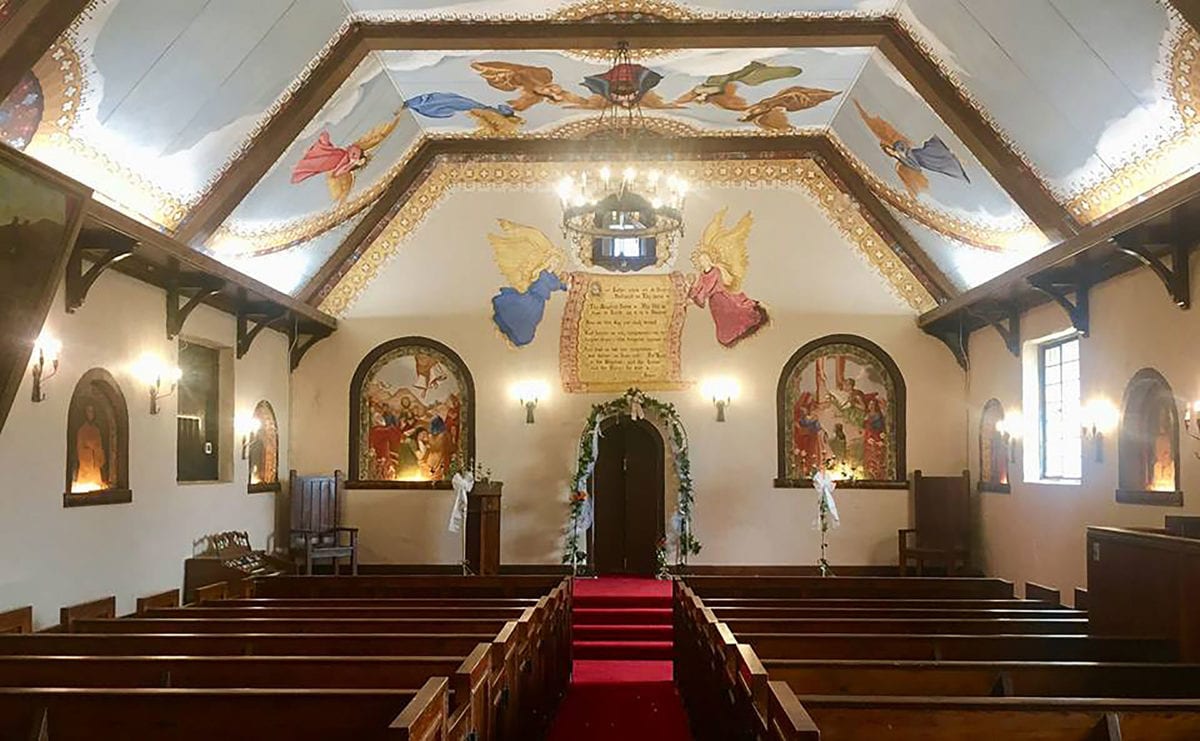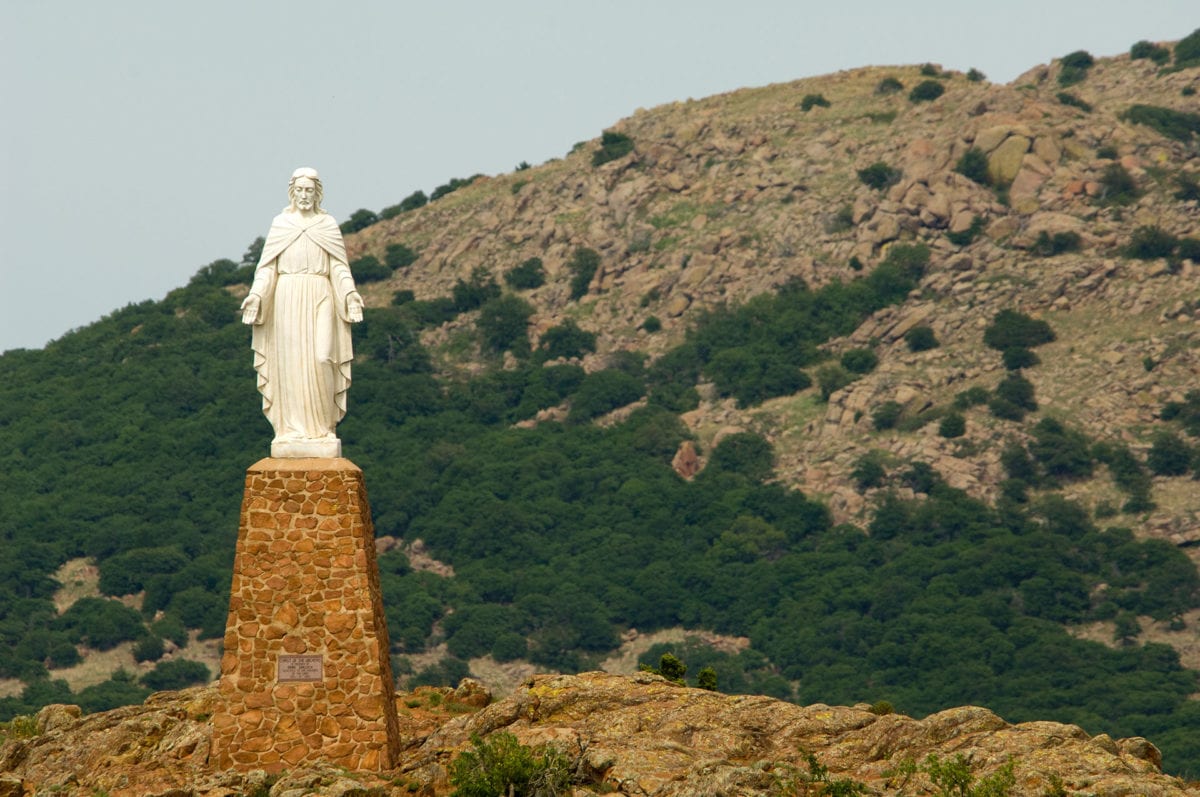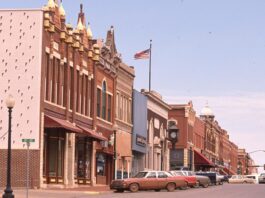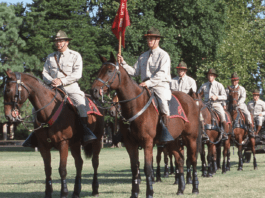In a tranquil setting nestled in the Wichita Mountains in southwestern Oklahoma, the Holy City of the Wichitas has told a story for nearly 100 years. The structures are made of local granite and bear a striking resemblance to the ancient city of Jerusalem. These structures are intended to tell the story of Jesus Christ – from his birth and ministry to his death and resurrection. For many visitors, this attraction is more than just a tourist hotspot.
“This is an important place for people to come to and have a little bit of peace, to get rid of some anxiety and stress and to know in their own hearts that there’s always hope,” says James W. Britt, president of the Holy City’s board.
While the city is open year-round, the main attraction every year is the Easter pageant. Scores of volunteers gather to perform a play depicting the life of Christ for hundreds of audience members, spread out across what has become known as Audience Hill.
“It’s one of the oldest traditions in the nation of passion plays,” says Larry O’Dell with the Oklahoma Historical Society. The 2021 Easter pageant will be the 96th year. According to records, the Holy City has already seen more than 40 million visitors.
The play has quite a history. The Rev. Anthony Mark Wallock, newly-installed at Lawton’s Congregational Church, decided to host a passion play for Easter in 1926. Five cast members put on the performance, which drew hundreds of attendees to the show near Medicine Park, shares O’Dell.
“It caught on really fast and they kept having it every year,” says Britt.
Over the coming years, the performance continued to draw hundreds … then hundreds of thousands.
In the 1930s, the Works Progress Administration (WPA) built the current Holy City installation in its present location. By 1936, WPA workers had built dozens of structures out of local granite, including the temple court, Pilate’s judgment hall, Calvary’s Mount, the Garden of Gethsemane, the Lord’s Supper building, Herod’s Court, a chapel, and other amenities, according to an article by O’Dell.
Photos courtesy the Holy City
“[The Easter pageant] was already a tradition, so they decided to enhance it,” he says.
And enhance it did. In its permanent home, the Easter pageant became even more popular. By the end of the 1930s, the cast had swelled to more than 300, with an audience of more 200,000 people in 1939, according to Britt.
“When the multitude of angels came down, there were hundreds of angels on the hillside,” he says.
Through the intervening years, the Holy City and its annual pageant have experienced many twists and turns. Attendance peaked in the 1940s, but has slowly declined, holding steady at several thousand since the 1980s. The pageant was originally held overnight with the resurrection scene happening at sunrise. Now the production takes place on two Saturday evenings in the spring.
The Holy City has experienced hard times recently, when weather and COVID-19 concerns have restricted performances. The pageant is free, but the Holy City relies on private donations for funding. People continue to show their support by stepping up with private donations, and Britt is grateful for the support.
“People are so generous who have a heart for the Holy City and a desire for people to know about Jesus,” he says. “And that alone is one of the greatest blessings you can take away from the place.”

